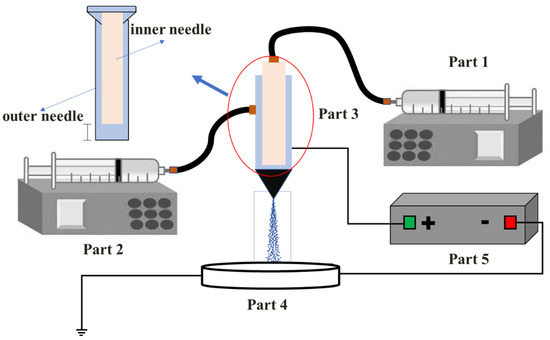Synthesis and Application of Microcapsules
A topical collection in Applied Sciences (ISSN 2076-3417). This collection belongs to the section "Materials Science and Engineering".
Viewed by 12773Editor
Interests: polymer and materials synthesis; microencapsulation and nanoencapsulation of active substances; surface functionalization for enhanced textile properties; thermal comfort; melt spinning; fibers; development of new synthetic methodologies and strategies for the design of new materials
Special Issues, Collections and Topics in MDPI journals
Topical Collection Information
Dear Colleagues,
Microencapsulated systems based on polymers or inorganic shell and active substances have emerged as good candidates for a broad range of applications.
The design of microparticles as a “smart” polymeric system has drawn increasing interest over the last few years due to their considerable potential when it comes to protecting different types of active agents in widely varied application fields, such as medicine, biomedical, pharmaceutical, textile, agricultural, food, and printing. The recent progress in controlled microencapsulation techniques has greatly facilitated the synthesis of well-defined microcapsules with a tailored functionality. Microcapsule shells and their functionality may finally be used to modulate surface functions. All these benefits are currently fully exploited for new tailored microparticles, for applications in drug delivery, self-healing, thermal energy storage, flame retardancy, cosmetics, functional coating, and material science, where they are used for the design of functional, responsive, or high-added-value materials.
This Special Issue is motivated by the observed increasing interest shown by various research groups in this field. Thus, considering your prominent contribution to this interesting research topic, I would like to cordially invite you to submit an article to this Special Issue. This Special Issue will publish full research papers, communications, and review articles. It will offer a global vision of researchers from universities, research centers, and industry worldwide working on microencapsulation and share the latest results in synthesis and characterization, as well as applications in basic and industrial processes. My goal is to collect comprehensive reviews from leading experts and up-to-date research from notable groups in the community, which will hopefully serve as a useful source of information for researchers.
Prof. Dr. Fabien SalaünCollection Editor
Manuscript Submission Information
Manuscripts should be submitted online at www.mdpi.com by registering and logging in to this website. Once you are registered, click here to go to the submission form. Manuscripts can be submitted until the deadline. All submissions that pass pre-check are peer-reviewed. Accepted papers will be published continuously in the journal (as soon as accepted) and will be listed together on the collection website. Research articles, review articles as well as short communications are invited. For planned papers, a title and short abstract (about 100 words) can be sent to the Editorial Office for announcement on this website.
Submitted manuscripts should not have been published previously, nor be under consideration for publication elsewhere (except conference proceedings papers). All manuscripts are thoroughly refereed through a single-blind peer-review process. A guide for authors and other relevant information for submission of manuscripts is available on the Instructions for Authors page. Applied Sciences is an international peer-reviewed open access semimonthly journal published by MDPI.
Please visit the Instructions for Authors page before submitting a manuscript. The Article Processing Charge (APC) for publication in this open access journal is 2400 CHF (Swiss Francs). Submitted papers should be well formatted and use good English. Authors may use MDPI's English editing service prior to publication or during author revisions.
Keywords
- Microencapsulation process and characterization
- Nanoencapsulation process and characterization
- Coating process of encapsulated materials
- Colloid and formulations
- Encapsulation in layer-by-layer polyelectrolyte films
- Sol–gel chemistry
- Emulsion-based processes (phase coacervation, interfacial polymerization, in situ polymerization, liposomes, solvent evaporation, etc.)
- Encapsulation in the pharmaceutical, biomedical, cosmetics, food, and textile fields, among others
- Hydrogels, polymers, sol–gel glasses, inorganic–organic hydrid materials, porous materials, multifunctional particles, micro and nanocapsules, and other host matrices and materials supports of interest
- Functional coating









